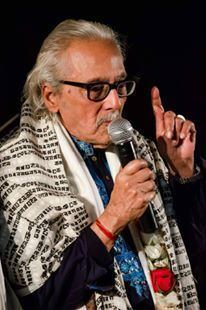 | ||
Pandit amaresh roy chowdhury on btv
Amaresh Roy Chowdhury (born 1928) is a Bangladeshi classical vocalist of the Indian sub-continent. He was awarded Ekushey Padak in 2016 by the Government of Bangladesh for his contribution to classical music.
Contents
- Pandit amaresh roy chowdhury on btv
- Pandit amaresh roy chowdhury vishwa sahitya kendra
- Early life
- Musical Journey
- Career
- Notable Contributioms
- Awards
- References
Pandit amaresh roy chowdhury vishwa sahitya kendra
Early life
Amaresh Roy Chowdhury was born in the village of Chouddoroshi in the district of Faridpur of the then Presidencies and provinces of British India on September 18, 1928. His father was Avinash Roy Chowdhury, & mother Rajlakshmi Roy Chowdhury. They belonged to the respescted zamindar family of Roy Bahadur Amaresh Mandal of Faridpur.
He moved to Rajshahi after the liberation war of Bangladesh in 1971, & has been living there with his wife Sonali Roy Chowdhury & his family ever since.
Musical Journey
When he was a student of fifth grade, he started learning classical music with his mother's support & appreciation. At first he started training from Pandit Sudhir Lal Chakrabarty, a famous music composer of the sub-continent. After his sudden death, Amaresh went to Harihar Shukla, another famous musician from Sirajganj, (father of the famous Indian singer Haimanti Sukla) for vocal training. Afterwards he received training on Dhrupada, Khayal & Thumri from the famous classical maestro Sangeetacharya Tarapada Chakraborty for some years. Apart from that, he learned modern songs & Raagas from composer Nikhil Chandra Sen, & received vocal training from Manas Chakroborty. After passing his Matriculation in 1945, he continued learning & practicing classical music.
Career
At present, he teaches music in Shilpashram Lalitkala Academy of Rajshshi, & in 1981, he founded his own musical institution, Sangeetashram.
Notable Contributioms
Amaresh Roy Chowdhury noted down the tunes of the songs by Kazi Nazrul Islam from their original records & preserved them in notations.
